In the automotive world, we always love the most of something. The car with the most power, the truck with the biggest engine. In the automotive Galapagos that was Australia, the most ute was easy to define. It was a Holden utility based on a family sedan that was, over the years, pushed beyond fast into the realm of absolute silliness.
Australia has always loved its utes. Where the US market has always been obsessed with the full-sized truck, Australian drivers had a unique obsession with unibody utility vehicles based on domestic car platforms. Over time, these transformed from humble work vehicles, into status symbols, and then outright performance machines. The peak of this trend spawned a potent machine named Maloo.
The story began in 1990, and the Maloo line would survive right up until the death of Australian auto manufacturing in 2017. It’s the tale of a humble bodystyle that was pushed beyond rationality, by an automaker that knew how to build one heck of a vehicle.
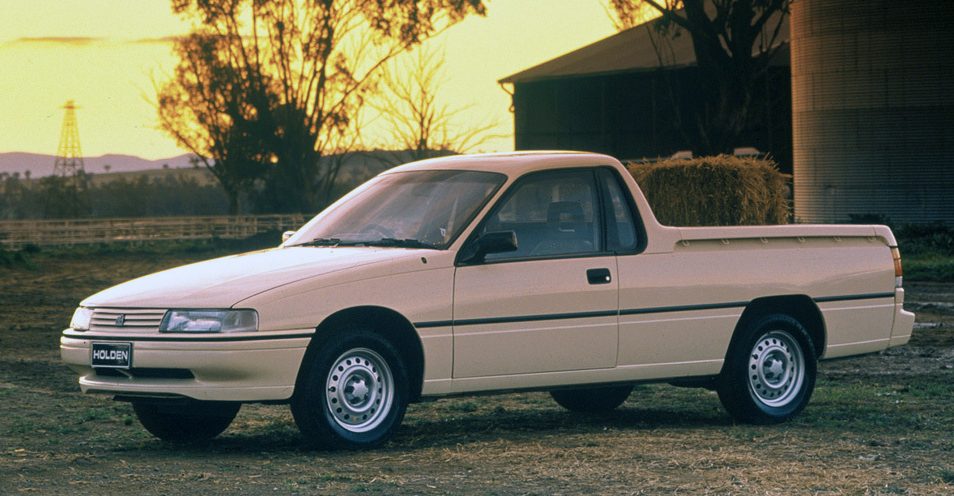
Origins
Holden Special Vehicles (HSV) was founded in 1987, established as an offshoot from the global motorsports powerhouse that was Tom Walkinshaw Racing. The private company immediately had a close relationship with Holden proper, effectively serving as the defacto racing and performance arm of the Australian automaker.
The company’s first roadgoing product was the Commodore SS Group A SV. It was a homologation version of the existing Holden Commodore VL, built to satisfy Group A racing regulations that required at least 500 road-legal models to be sold to the public. The model instantly made a statement, with the car soon earning the nickname “Batmobile” for its striking plastic bodykit. Buoyed by this success, HSV soon proceeded to expand into a range of more powerful and higher-specced variants of existing Holden models.
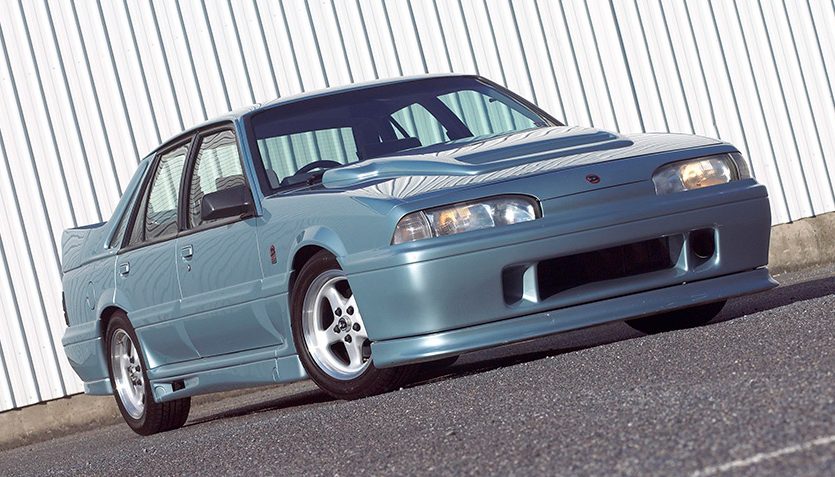
It was only a few years later that HSV turned its eye to the Australian ute, when Holden reintroduced a car-derived utility based on the VN Commodore platform in 1990. At the same time, it was decided this new ute would also receive the HSV treatment, with upgrades across the board in performance, handling, and aesthetic appeal.
The name chosen for this model—”Maloo”— meant “thunder” or “storm” in an Aboriginal language, believed to be from a nation in the New South Wales area. It’s a common misconception that there is a single “Aboriginal language” spoken by indigenous Australians; in fact, there are many. HSV never outlined specifically which indigenous language the word came from; it may have been derived from the word “malu” from the language spoken by the Wonnarua Nation. The name was, however, reportedly cleared with indigenous organizations before use.
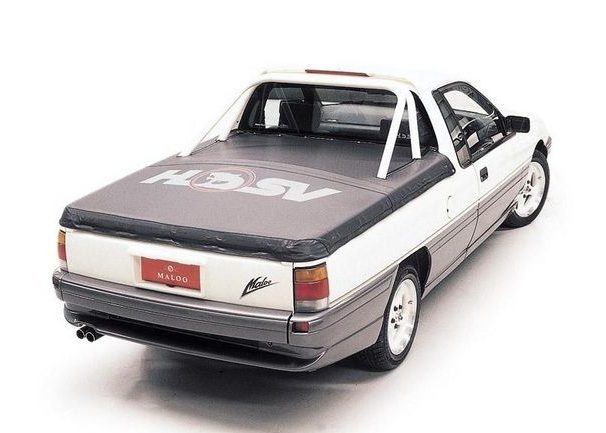
The first Maloo ended up receiving an uprated version of Holden’s own 5.0-liter V8 engine, good for 241 horsepower and 295 pound-feet of torque. It was a nice lift, but not revolutionary compared to the 221 hp V8 available in the regular Commodore range. Visual touches included a body kit, interior upgrades, and a sports bar on the rear bed. It also scored revised suspension to improve handling over the basic Commodore ute. A limited-slip differential was standard, allowing the ute to be as tail-happy as its new owners desired.
Just 135 examples of the first Maloo would be built, with the model in production from October 1990 to April 1993. When the VN Commodore generation was updated to become the VP, HSV would release a VP Maloo in turn, with just 49 examples built. It was the same concept, with the same V8 engine, just applied to a slightly refreshed Commodore ute underneath.
Soon enough, it was 1994, and Holden had released the all-new generation VR Commodore. With it came a new ute, and HSV developed a new Maloo in turn. Holden’s own V8 remained, now putting out 248 horsepower and the same 295 pound-feet of torque.
The VR would soon become the VS Commodore, and HSV continued to update the Maloo in turn. The new model brought new levels of refinement—including a driver’s airbag and air conditioning as standard. Even better, reflecting the model’s prowess, the new Maloo would be fitted with a 250 km/h (155 mph) speedometer. The VS Series II Maloo scored a further raft of quality-of-life updates, with ABS as standard, as well as electric windows and mirrors, and cruise control on auto models. Power remained the same, however, with HSV unwilling or unable to get more power out of the 5.0-liter Holden V8 within an acceptable envelope of cost and/or reliability.
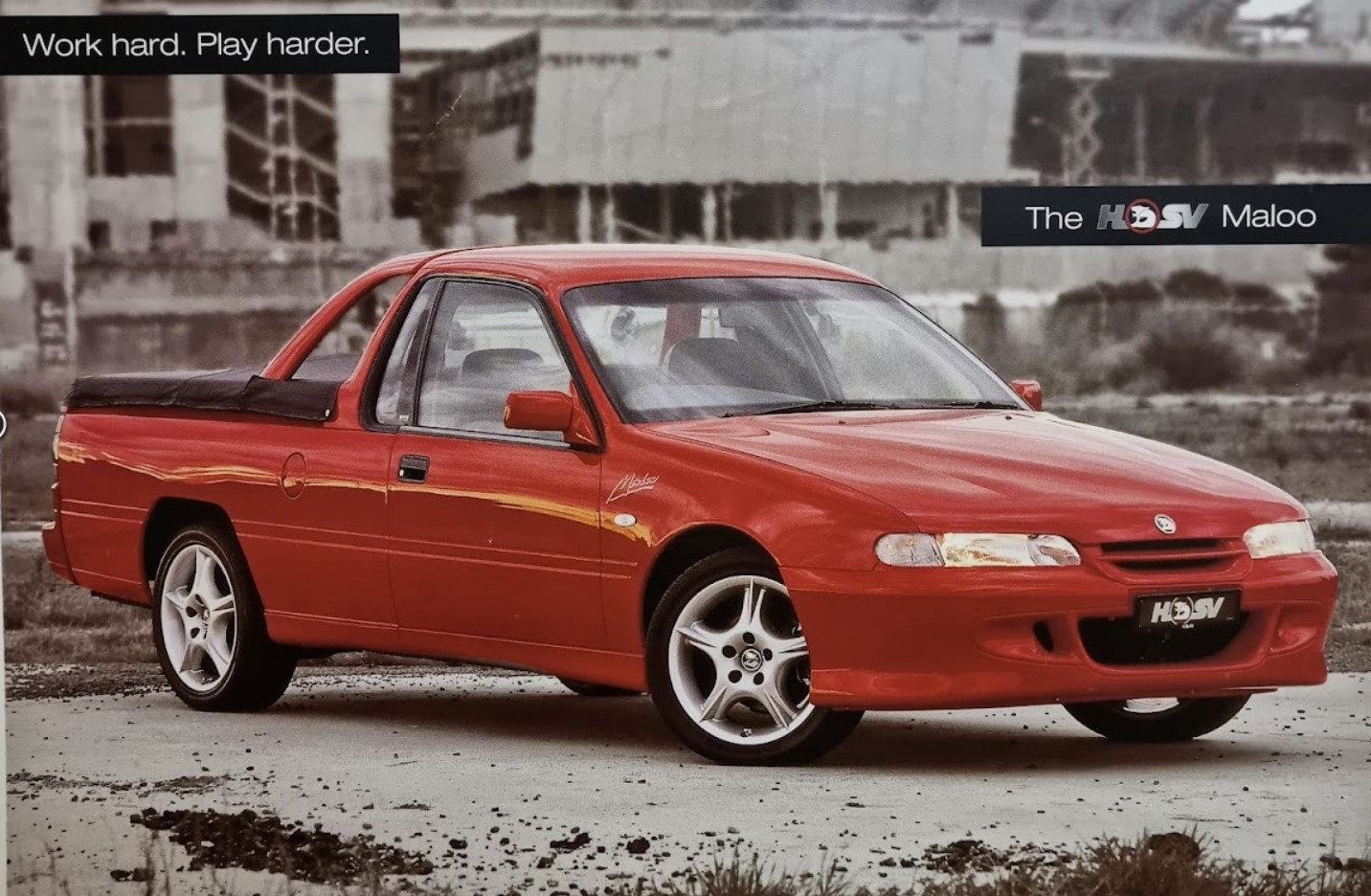
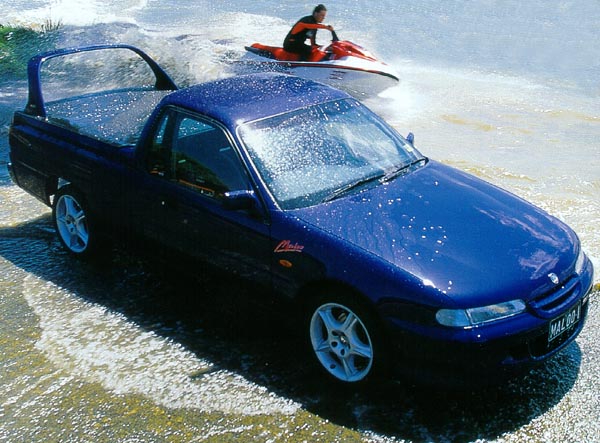
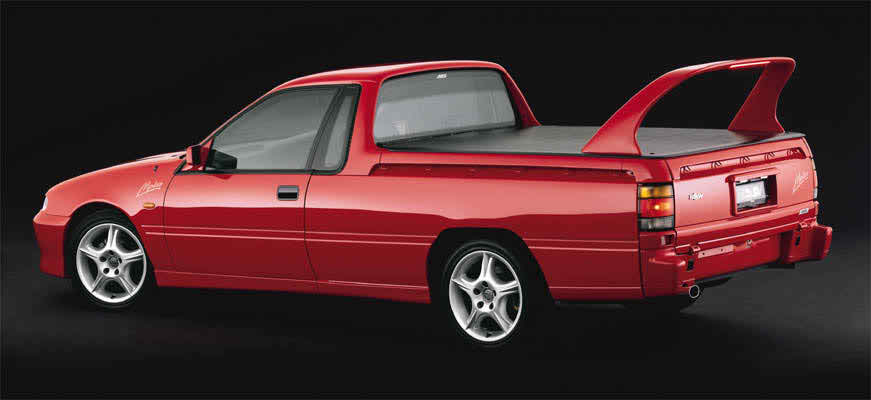
American Muscle
As the new millennium approached, Holden was making big changes. No more would it build its home-grown 5.0-liter V8. Instead, Commodore models would benefit from the best of GM’s research and development. Come 1999, the VT Series II Commodore sedan was available with the soon-to-be-legendary LS1, good for 295 horsepower. This would carry over to the VX Commodore in 2000, as well as the corresponding VU ute.
It’s true that some mourned the loss of the locally developed Holden engine. However, few argued against the greater power and torque of the LS1. It wouldn’t take long to win fans Down Under
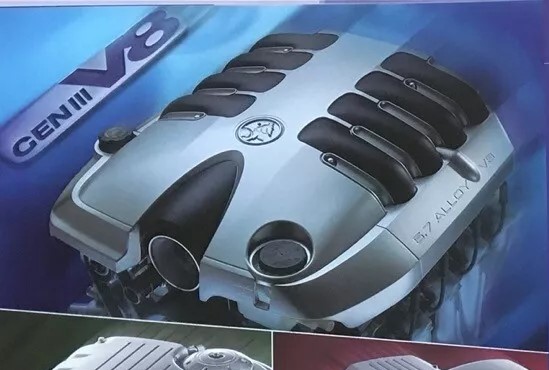
A year later, HSV would put this engine to good use in the new generation of Maloo. It was able to score a more aggressive LS1, which pushed out a mighty 342 horsepower and 350 pound-feet of torque. The more powerful engine benefited from an HSV-developed cold air intake and exhaust, and it would propel the sports ute to 60 mph in 6.0 seconds flat. The model also benefited from independent rear suspension, which was becoming standard across the Commodore range, including the ute models.
The new American grunt saw HSV step things up a notch in the aesthetic department, because the newfound grunt was more than matched by the styling. The ute wore an aggressive front bumper with a deep color-contrast air dam, while the tray got a solid tonneau cover and striking rear wing in top trim. It was edgy, but it had a little more control and restraint compared to some of the more dimensionally outrageous body kits of previous HSV models.

HSV had specifically styled the model to appeal to the youth market, having noted that 22 to 30-year-olds made up the bulk of Maloo owners. It was truly a different era. In the days when rent and houses were cheap, young workers could afford to splash the money from their first adult jobs on a ridiculous V8 sports ute. A top-trim HSV Maloo R8 cost $55,780 in 2001, and the median house price was just $225,000. There was money to spare, and a lot of it got spent on utes.
American powertrains became the norm at Holden, with LS engines becoming a mainstay of the Commodore lineup. Meanwhile, HSV’s models got even hotter versions shipped over from GM. As LS engines grew ever more powerful, Australia’s fast ute got ever crazier. When the all-new VY Commodore came out, the VY Maloo had 348 horsepower. It wasn’t long before the VY Series II Maloo bumped that up to 382 horsepower. By 2005, the updated VZ Maloo was upgraded to the 6.0-liter LS2 and hit 400 horsepower. Tire smoking burnouts were guaranteed if your foot was heavy enough.
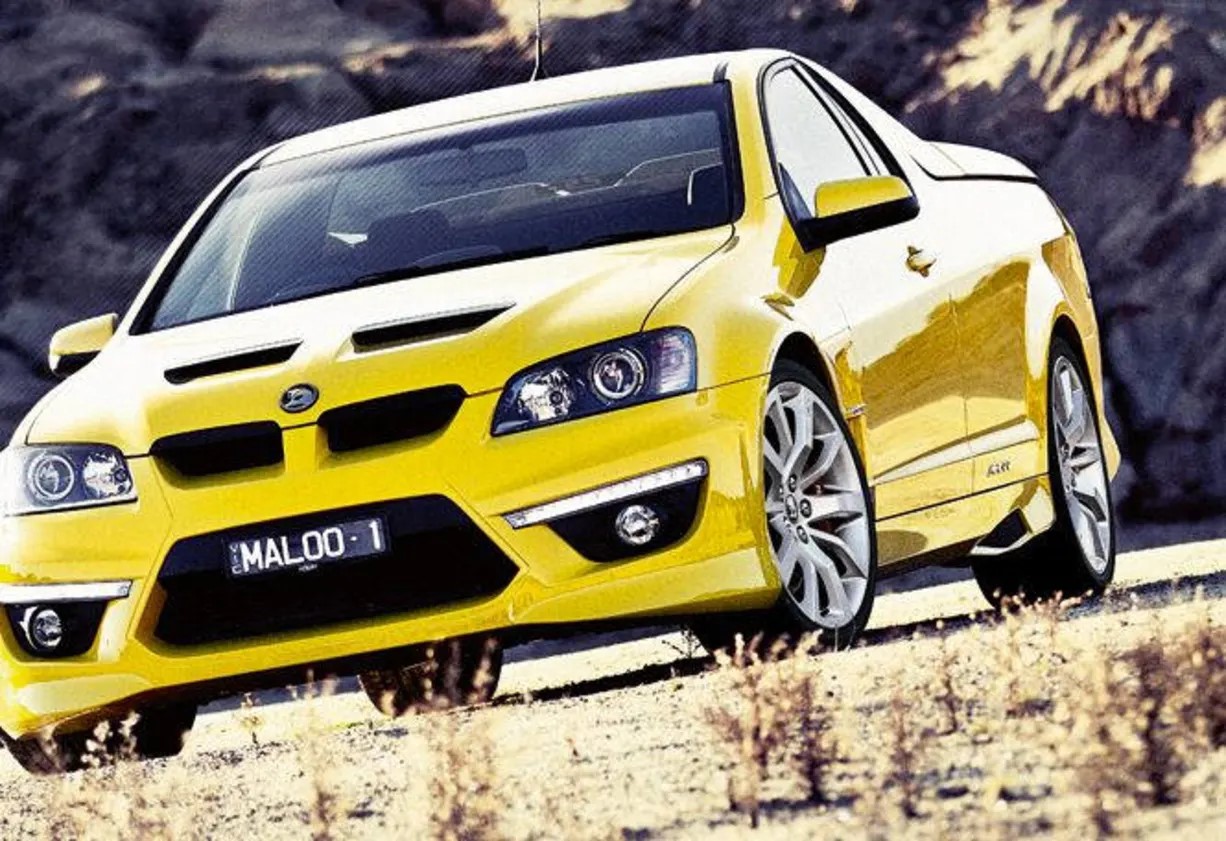
By this point, the Maloo had become somewhat of an icon. It was the absolute fastest, meanest ute you could get with a Holden badge on the grille. The Commodore SS ute was still a quick machine, but it lacked in the visual and power departments compared to the outrageous Maloo. Where early generations had been built in very limited numbers, in the VZ generation, HSV turned out over 2,000 examples. It was a much more visible machine, both in print, on TV, and on the streets of Australia. You could also spot the later versions by the hoods with nostrils so big they could swallow small animals.
Despite Australian tastes slowly turning away from big sedans like the Commodore over the years, the cars continued to improve—and so did the utes. With the all-new Zeta-platform VE Commodore hitting the market in 2006, it wasn’t long before the corresponding Maloo rolled out of HSV. It wore searing green paint, along with a wild body kit featuring badge-emblazoned sail panels and a muscular-looking solid tonneau cover. It didn’t matter that this made the ute less practical for hauling things, because few Maloo buyers at this point ever intended to put something in the bed. You also got sideskirts that were perilously close to the ground, and the later VE-based models brought back nostrils once again that could suck the top off an Oreo.
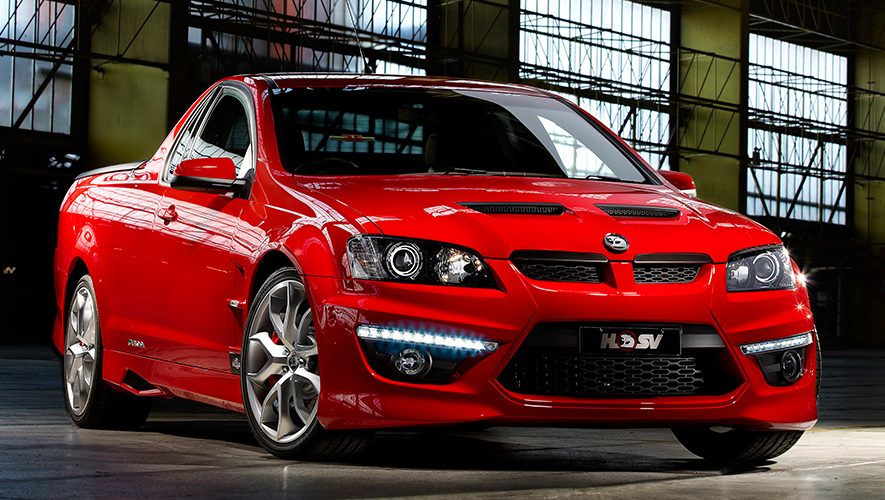
Power continued to rise, too. The utes now featured the 6.2-liter LS2 engine, and HSV’s tweaks pushed power to 412 hp and 412 pound-feet of torque. As the company fought for supremacy against the Ford Falcon in the power stakes, both in turbo six and V8 guise, the power kept climbing ever further. The Maloo hit 425 hp in 2008 and 435 hp in 2010. Launch control was eventually introduced, which likely won victories for a few owners at the stoplight drags.
In this era, HSV just kept going from strength to strength. Holden would make a new, amazing Commodore, GM would make a new, more powerful LS engine, and it would knit the two together to make magic. It kept nailing fast four-doors with the Clubsport line of sedans, but it was the Maloo utes that really stood out as true Australian icons.
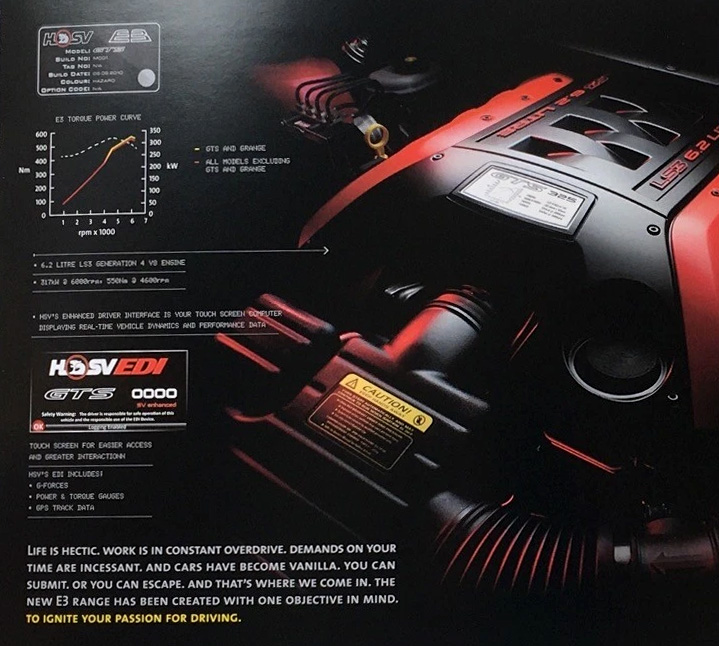
Final Insanity
The last true hurrah for Holden was the VF Commodore. Announced in 2013, it further tweaked the Zeta platform, and offered new fuel-efficient engine options and better handling to boot. Intended to be a better car than the VE Commodore in just about every way, it was in fact the beginning of the end. Just months after it went on sale, Holden’s exit from Australia was announced, with factories to shut down by the end of 2017.
The end was nigh, but Holden would go out with a bang, not a whimper. With only a couple of years left on the clock, HSV finally turned to forced induction to produce a ute with truly insane power levels. Thus was born the GTSR Maloo, complete with a supercharged LSA engine good for 583 horsepower and 545 pound-feet of torque. These were supercar numbers, with this bonkers drivetrain installed in a platform whose main job was typically to ferry families to the supermarket and back.

By this point, HSV’s product had become truly modern and sophisticated. You got traction control, stability control, and a torque vectoring differential, as well as a Driver Preference Dial to choose how aggressive you wanted those systems to behave.
In turn, the 20-inch alloy wheels hid massive 16-inch brakes up front and 14.6-inch rotors at the rear, ensuring you would be able to haul your rocket to a stop after taking advantage of all the power on offer. Right up until the end, you could get a six-speed manual if you wanted the ultimate control over power delivery, and a six-speed automatic was also available if so desired.
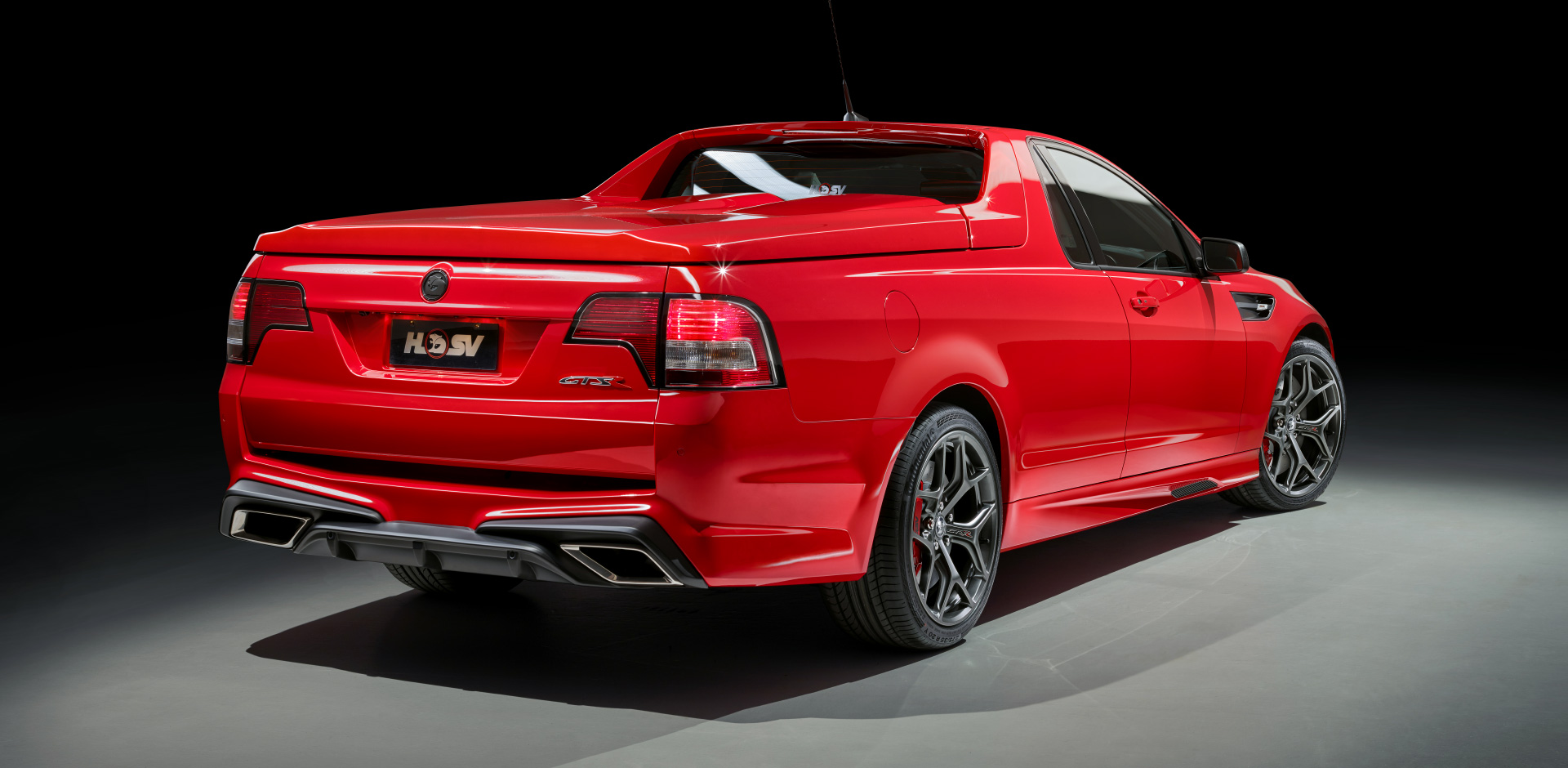
Holden would sell 600 examples of the GTSR Maloo, painted in colors like Nitrate, Spitfire, and Light My Fire. With almost 600 horsepower on tap and all the high-tech electronics to put that power down to the ground, you might think that’s where it ended. But there was one more Maloo yet left to build.
See, Holden’s Australian production was going to die forever in 2017. It meant that HSV was facing its last opportunity to build the greatest, most powerful Holdens of all time. Amidst that backdrop, it created the HSV GTSR W1.
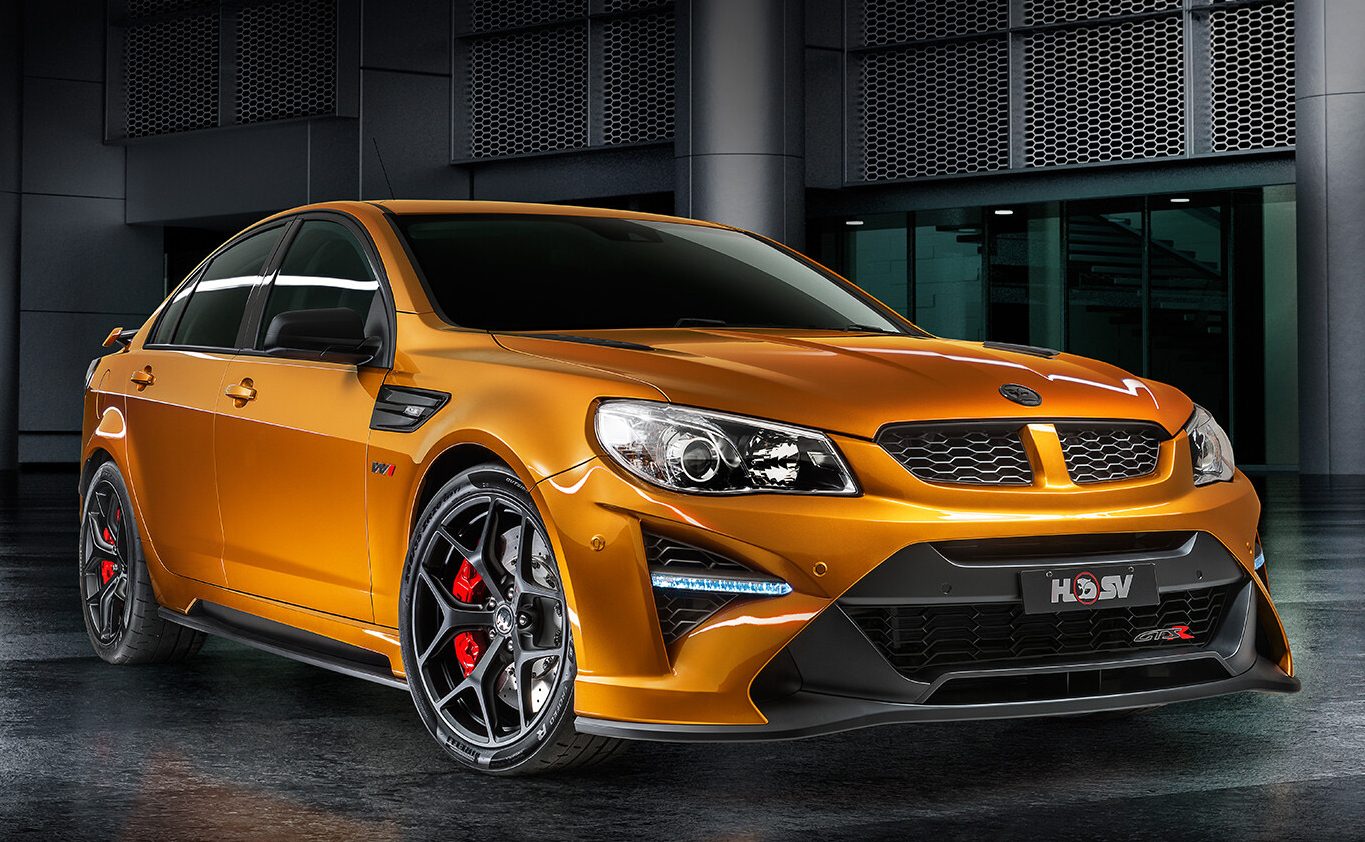
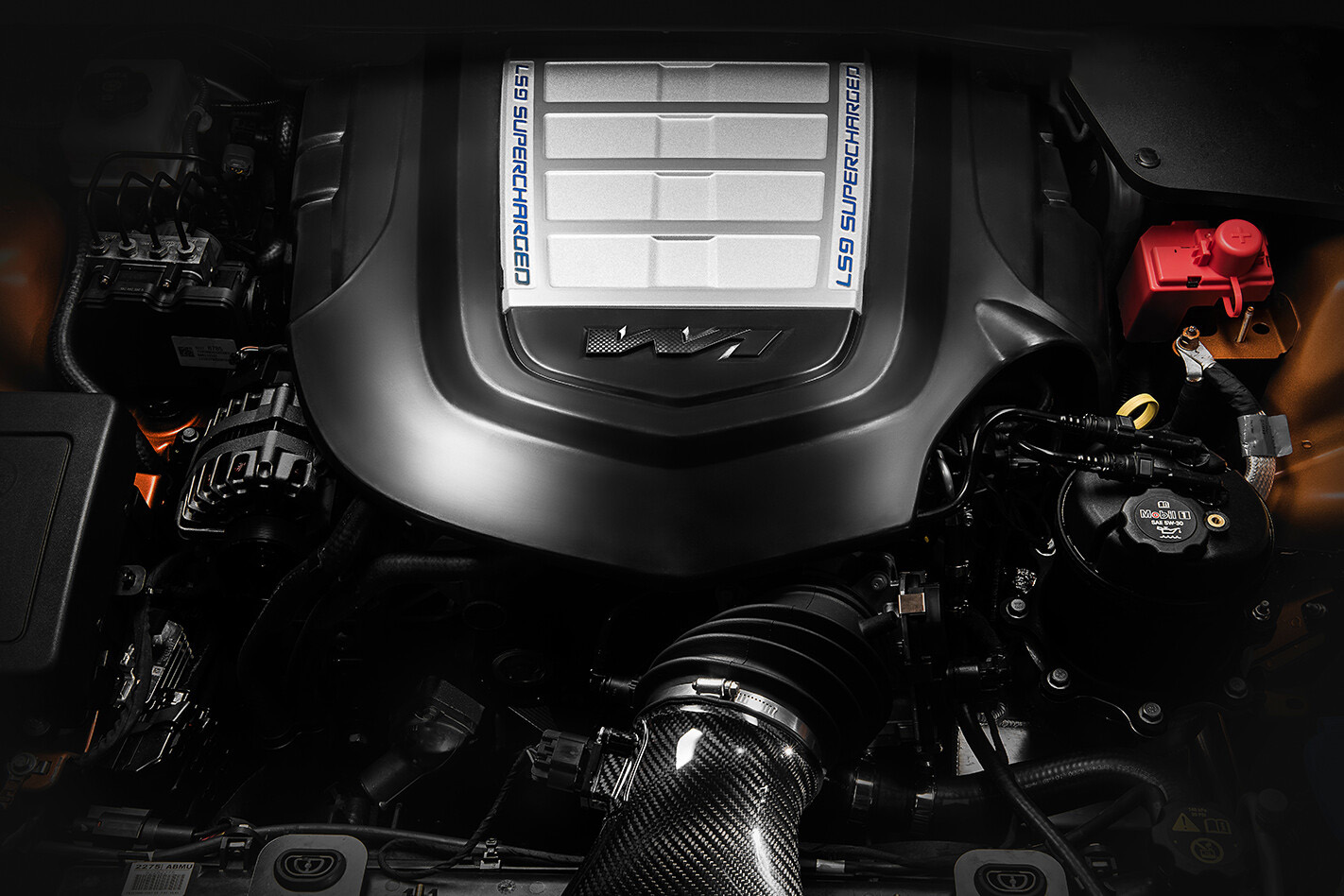
The last-ditch halo model cost $170,000, putting it in the realm of cars like the BMW M3 Competition and the Mercedes-AMG C63 S. It was a truly insane price for an Australian four-door sedan. However, HSV’s managing director, Tim Jackson, thought it was worth every penny. “Can you find a car that delivers what the W1 delivers for anywhere near the price? No. That’s the justification, I think,” he told the press in 2017.
He kind of had a point. When announced, the world learned the W1 would feature the supercharged 6.2-liter LS9 that was fitted to the C6 Corvette ZR1. It delivered 635 horsepower and 601 pound-feet of torque, and had a dry sump system fitted because it was just that serious. Nothing else on the market came close in terms of power per dollar; hence Jackson’s assertion that it was very well priced indeed. Just 275 examples were built; on the used market, they now change hands for over half a million dollars.
The GTSR W1 was a sedan only, effectively intended to be the most powerful Commodore ever to roll out of HSV. The story goes that HSV didn’t have a business case to build a ute version in any real numbers. However, it did have a number of GTSR Maloo bodies and LS9 drivetrains still on hand. Rather than go through the hassle of a full model approval and production run, it instead tapped Walkinshaw Performance to build just four W1 utes for select customers.
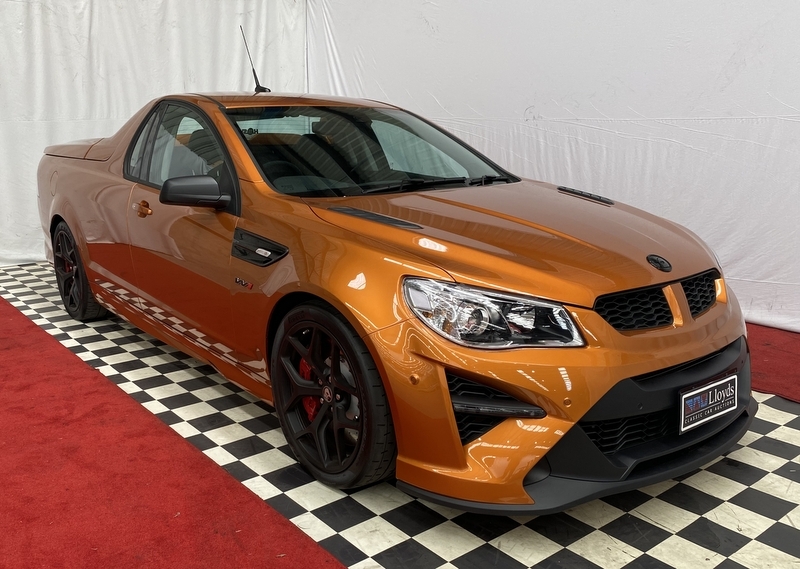
The GTSR W1 Maloo was never offered to the public; you effectively had to be in HSV’s inner, inner circle to gain the chance to buy one. The price paid has never been made public, but it reportedly sat far above even the W1 sedan’s six-figure price. One Holden source reported the price came in around “decent Lamborghini money” for those lucky enough to buy one. The result, though, was a car-based ute pushing out a ludicrous 635 horsepower that could sprint from zero to 60 mph close to four seconds flat. It was a fitting last hurrah before Holden shut down Australian production for good.
With only four official examples built, and two more reportedly assembled without HSV’s direct approval, W1s are amongst the rarest of the rare. One example sold for over $1 million in 2021, while another was listed for $1.5 million in 2022. Unsurprising, as being the best and the last of something tends to multiply a car’s value.

Since 2017, the ute has largely vanished from automotive production around the globe. In its place, Australia has an endless stream of mid-sized dual-cab trucks, along with a handful of American full-size imports that don’t fit in parking spaces. But the ute itself, and the sport utes that sat at the top of the tree? They’re gone, and they’re not coming back. A few thousand gleaming Maloos remain as a living tribute, having been the best of the best before auto manufacturing left Australia forever. You’ll see only a few out on the roads these days, as their classic status and high value make them a prime target for thieves. Many now spend the majority of their time living under car covers in garages.
The sports ute, and the Maloo in particular, was a funny thing. Holden and HSV took what was ostensibly an affordable work vehicle, crammed in a powerful engine, lowered suspension, and a bit of body kit, and called it good. Then they just kept turning up that dial to ridiculous levels until the market could bear no more. What resulted was some devastatingly fast vehicles with lots of practical storage that was ultimately never used. For reasons we’ll never truly understand, some Aussies just liked to go fast with a big empty tray behind them. That was just our thing.
Image credits: Holden/HSV except where listed

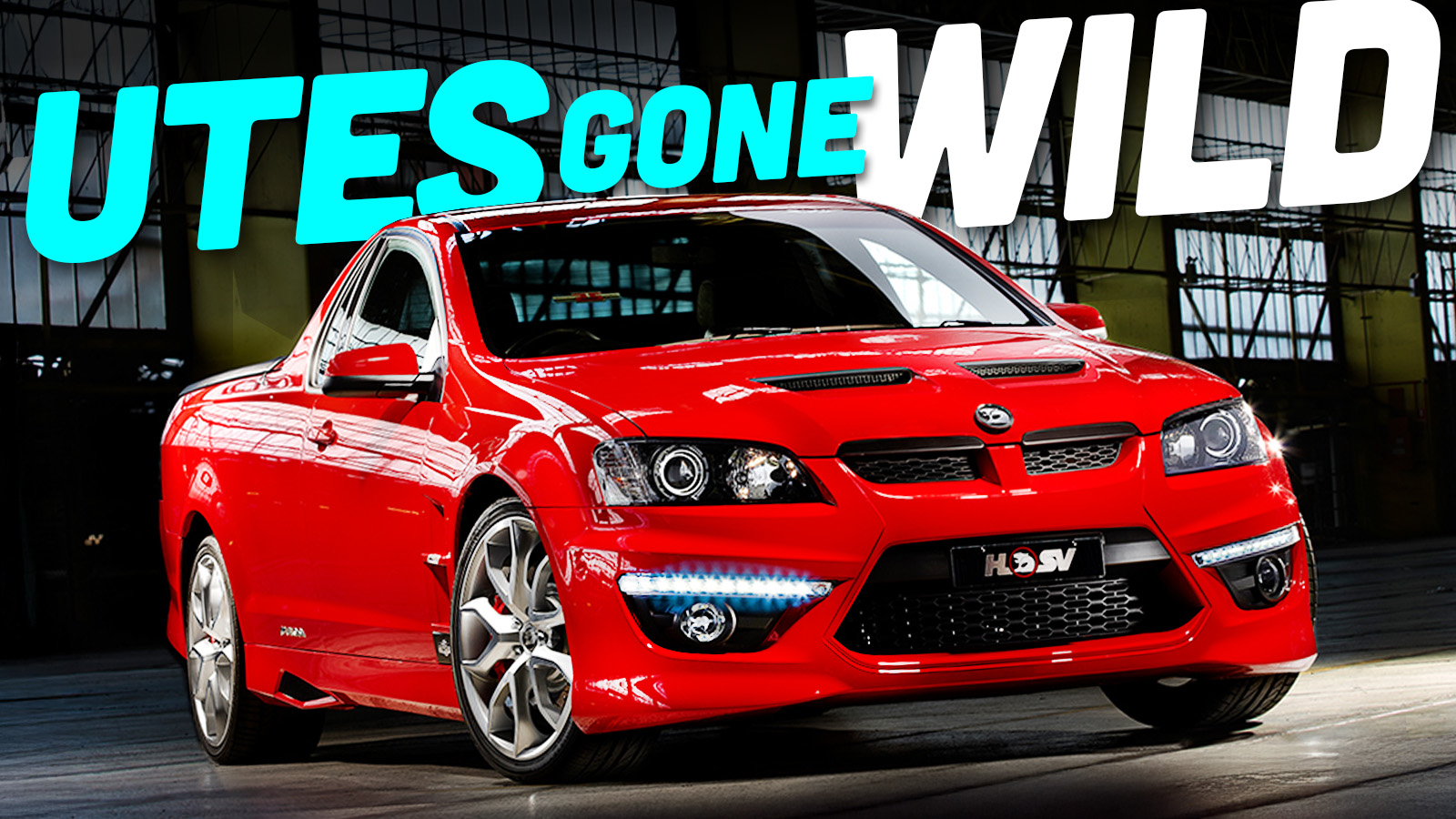




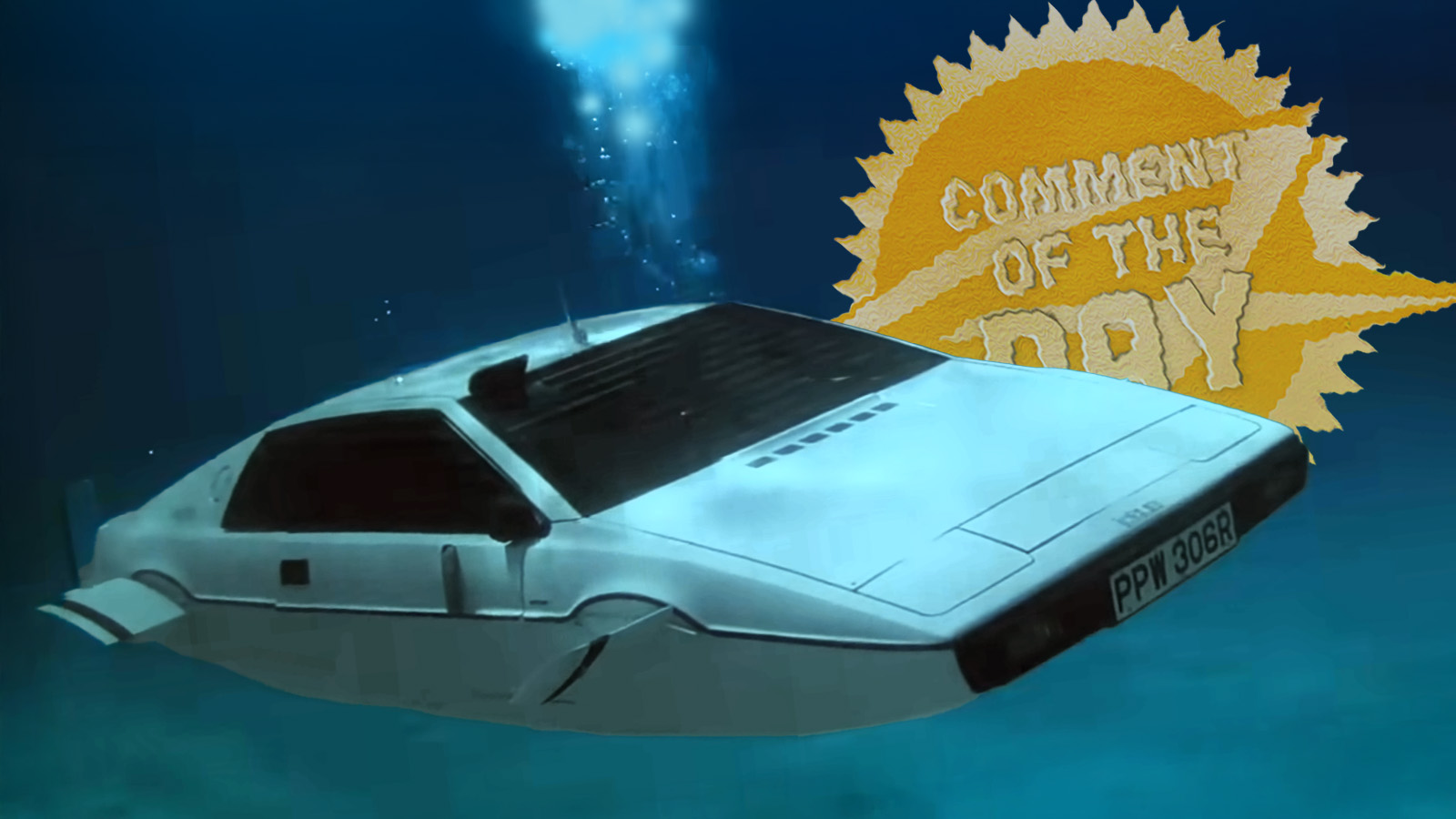


The word for thunder is “Koondarnangor” in the local Noongar Aboriginal language where I live.
Driving a ‘Holden Koondarnangor’ doesn’t quite roll off the tongue the same way as Maloo…
Before I read the rest of the article, I am just going to call out “the Galapagos” and just say you’re not wrong. I love Australia and I’d move from the US there or to NZ in a heartbeat.
Got to drive around NSW and Canberra 12 years ago. So cool.
Great article, Lewin. Miss ya already.
I was really sad to see such a quintessentially Australian thing as the Ute fall by the wayside. To see the crazy little corners of car culture eliminated in the name of “progress” and streamlining manufacturing really sucks. I don’t know that they would’ve sold in big numbers, but it would have been interesting if GM had brought over a ute version of the Pontiac G8 or Chevy SS. There are a lot of American enthusiasts who drool over old El Camino SSes.
Not everyone wants a lozenge shaped soccer-mom mobile or a giant bro truck, but we’re fast approaching the day when those are all that’s available (in the US anyway).
The problem is most people who want non-standard vehicles are also people who cannot afford non-standard vehicles, and that part is only getting worse. As vehicle prices skyrocket it makes less and less financial sense to buy new, so only the extremely well off and financially incompetent end up dictating what new cars sell and which ones don’t.
Australian here. The Maloo has been a celebration of practical stupidity since that day it was birthed. Much like The Autopian..
So are Americans
Australia didn’t get the memo that muscle cars died in the mid 70s and just kept cranking out rear drive powerful beasts. I love it. I hate that Holden died. Remember that they were so good at it that GM sourced some muscle from their Autralian subsidiary in the form of the Pontiac GTO, the Pontiac G8, and the Chevy PPV and SS. You guys must remember that shortly before Pontiac whimpered it’s last breath they showed a Pontiac version of the Holden ute as a compliment to the G8? That would’ve been awesome. Too bad Pontiac was killed just as they were hitting their stride again.
This was not solely a GM thing, Ford also had their utes, Ford Falcon (not the US Falcon)
, think mach 3/ Granada/ Mondeo on steroids but in pickup form, delivering the same sort of vehicle but from the Ford stable, while GM had it’s version, like in Europe Uncle Henry had its own version. Such a shame that GM decided it would no longer be involved in the right hand drive market and Ford now has it’s ‘global model programme’.
I was next to an R8 in traffic today – plate was “LAST R8”. I’m a Ford guy who drives VWs, but those things were the ducks guts!
I just moved to Australia and one of my biggest surprises has been the fact that they built crew cab (4 door) Commodore-based utes. I think the 2 door utes are well known in the US as the spiritual successors of the El Camino, but the 4 door ones I had never seen. The proportions are truly hilarious.
The VE Commodore has aged really well. Muscular and modern without being overstyled like the VF successor.
By the way, the yellow Maloo in the article is a VE, not a VZ like the caption says.
I own a four door one, a Holden Crewman, I’ve had mine for 15 years. I was going to post about the yellow ute, but you beat me to it.
Soon enough the American youths will grow up and need to drive something completely different from their parents. Since mom and dad all drive SUVs and pickups, and it’s too soon to bring back sedans and wagons, maybe we’re on the precipice of the age of the ute! That would be so awesome.
Dammit, my list of cars I’m going to buy when I win the lottery just got longer.
I named my dog Maloo HSV. Alas, cannot post pictures.
GM was supposed to bring the Ute over in 2008 as a Pontiac in the G8 family, I was doing work out at the GM Tech Center and there were a number of them parked around there. I wanted to order one as soon as they were available and then they decided not to. I was pretty disappointed, first chance for a new El Camino since they last produced them in 1987.
I remember that and the contest to name it. I knew I would buy one. Oh well.
Were those units already built with RHD?
I seen RHD and LHD ones, but don’t know if they were to be built LHD for export. I expect they’d be done the same way the G8’s were done.
*patiently waits another 10-15 years so I can import one and live the dream*
Get you a VU series. LS power & eligible starting January. That’s when I’m shipping mine up.
Oh man, that’s a good idea!
Bless these maniacs. I’m looking to import an Aussie LS Ute in the next year or 2. Please do an article on BnS Utes, I find it both baffling and intriguing.
(psst that yellow Maloo is a VE/Zeta “E-series”, not a VZ-based ute)
I think Ford sold more ‘Cleveland’ series V8s down under than in the states.
Saw 4 American ute’s around Ocean City MD a couple weeks ago. Three El Camino’s and a Ranchero.
I saw 114 El Caminos/GMC Caballero/Sprints this past weekend at Elcofest in Nappanee, IN. Mine was one of them. I drove the El Camino almost 600 miles to get there and another 600 miles back home. It was a blast!
https://elcofest.elcohaulicssanonymous.com/SHOW/
There were even more in 2024, but this year there were thunderstorms forecast for the entire week so quite a few people decided not to come.
Probably did, it helps they had a 302 version.
No they never did, the 302 was always a Windsor block. Cleveland head can be adapted to work (same bore spacing). That was the true Boss 302, a Windsor with modified Cleveland heads. Since the Windsor GT40 head came out such conversions have shrank.
Looking at a bare block for a Aussie Cleveland 302, it’s clear it’s a Cleveland and not a Clevor (Windsor block with Cleveland heads.) The dead giveaway is the timing chain cover is cast into the block and covers the timing chain. Windsor blocks have chains entirely external to the block and covered by an aluminum timing chain cover. 2 other features that confirm this are the water outlet being part of the block (dry intake) and pointing upwards. Windsor blocks have wet intakes and the water outlet being part of the intake pointing forwards.
Look at 3:45 on this video for a clear pic: https://youtu.be/7xQjdHFVXww?si=jNzDM-NYUMgZ-9k-&t=225
Thanks for the education, Ford never sold the Cleveland block in the US at under 351 CI. All US 289/302 are Windsor blocks. US Cleveland motors were 351 or 400.
A 302 Cleveland would be epic.
Yep, once I got rid of all the HP restrictions in my 78 400, it was quite the beast.
I know I’m supposed to enjoy how much better it is here than there, but every time I see a Holden, re-watch Rake, think of a Diamante AWD Wagon or remember that they had Toyota Technicals with Diesel V8 available new till a couple of years ago, I have those doubts, doubts…
Rake is most excellent TV
Just remind yourself that huntsman spiders are regular denizens of the shower curtain’s shadows in Australia and it’ll curb the urge.
I knew you couldn’t leave without a Ute story! Thanks for this. Unlike utes and Holden, I hope you’re not gone forever.
PS. $1.5 million is a lot of Maloot.
I THOUGHT YOU LEFT
Apparently down under April Fools occurs on August 1st.
Lewin’s “last” last regular post.
I loved the Maloo from the moment I found out it existed. I owned a 2004 GTO for years which is built on the same Commodore chassis of the time and it was great. We did get the Chevy SS here for a couple great years, which was basically the rebadged Commodore as well, with LS3 and manual trans option.
I pined after the Various LS powered Maloo’s, knowing we in America would never get them.
Ah man this is just so sad, Holden was the best. Everyone knew that all the coolest, craziest, RWD V8 sedans/wagons/utes came from there in giant clouds of tire smoke the whole way.
I worked at GM during the time of Holden’s demise and it was rough. I worked on a project that directly interacted with our fellow Holden engineers, and it was brutal. The loss of Holden truly was like hearing a million voices all cry out and be silenced at once, a great disturbance in the force.